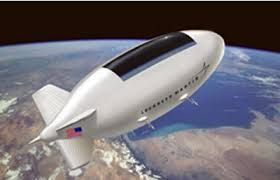Recently, I read a UPI story about a new development at the Lockheed Martin Company. Forget the flying saucers they may be building at the Skunkworks, and consider these words in the report:
“A wireless ground sensor network by Lockheed Martin will soon possess the capability of integration with unmanned aerial vehicles, the company said Monday.
The ground sensor system is SPAN, or Self-Powered Ad-hoc Network. It is incorporated with small devices that harvest energy from its surrounding environment, re-charges itself and only transmits when there is a sensor reading of concern.”
Read more: http://www.upi.com/Business_News/Security-Industry/2013/10/22/Ground-sensor-system-to-link-with-UAVs/UPI-22361382453158/#ixzz2iSrA0pME
These palm-sized devices might use plug & play ASICs to expand functionality to include very elaborate sensors tuned to human body heat, smelling devices, vibration sensors, video cameras, CBR detectors, and so forth. In addition to “Harvesting energy from its surrounding environment”, the SPAN sensors could also include tiny fuel cells such as those manufactured by Neah Power Systems, Inc. All of the sensors then networked together could pass information-enriched messages back and forth at a high duty cycle not only to the drones flying high overhead. Imagine much higher, a solar-powered blimp drifting nearly as high as some low-orbit satellites, containing a two-man crew and a battle management supercomputer that controls and directs network activities and drone formations below the cloud layers.
All of a sudden, we have the prospect of two human Airmen controlling a very large area on the ground, drawing on robotic firepower as needed to maintain their control. The battlefield can become mobile, if required, through the addition of a robotic logistics pipeline.
With image processing in the flying supercomputer and raw image and other data provided from the sensors scattered below, nothing will live on the battlefield without permission from above. Worst case, with the whole business shot to hell in battle, only two human lives are lost. Call me an old dreamer, but I like the idea a lot, because it removes more of our warriors from the conflict arena and might actually save some money in the process.

Image Courtesy of the Lockheed Martin Co.

Gives Orwell’s big brother more stature than ever. I wonder what a large solar flare might do to SPAN. Or a strong EMP burst.
One more thought, if I may: Read my article today about the cyber attack against European and US government agencies. Then consider what might happen if the SPAN is high-jacked and turned against its creators.
Hi Jerry; thanks for the visit. Rad-hardened ICs in a faraday cage would do the trick! 🙂
I liked your post, Jerry. I should not discuss in an open-source environment like this the C4ISR aspects that would make a hijack highly unlikely. Also, they could be very low-powered to limit the transmission range of each node.